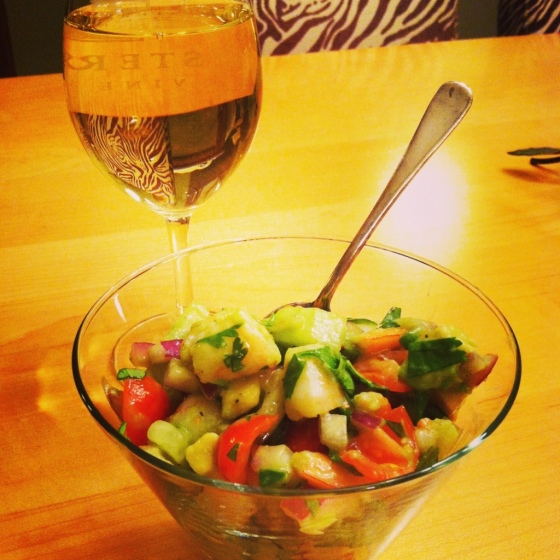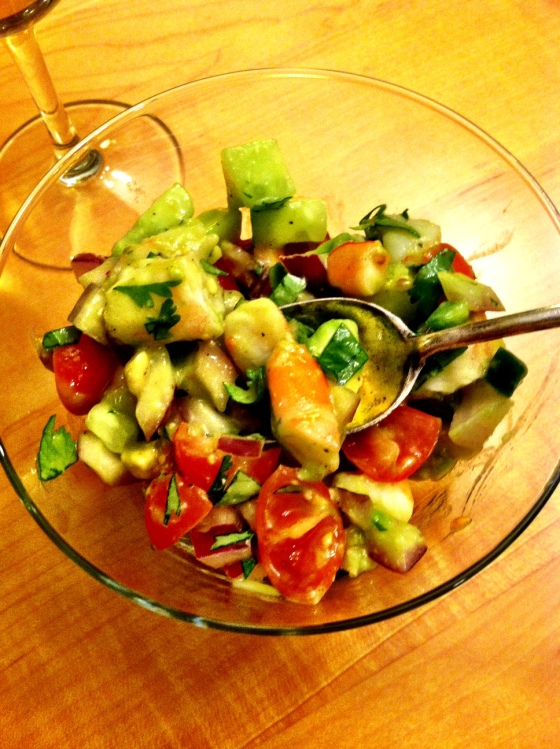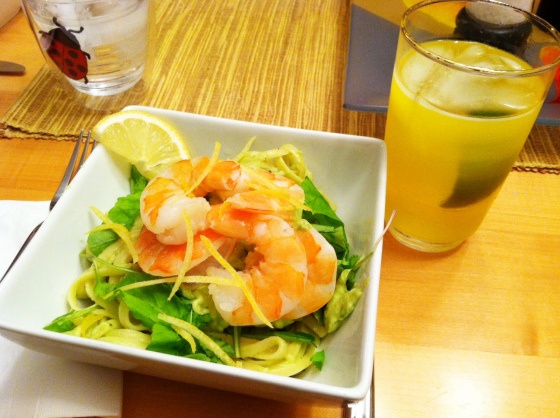Eating locally can sometimes be a challenge. Especially depending on where you live. I’m really blessed to live in an area that makes an awful lot of amazing things, but I know that’s not everywhere. Then there are those brats who live in California where everything is available locally pretty much all the time and everyone gets it and does it and even the “fast food” joints serve local grass-fed beef. It’s really just infuriating. Or great. Or whatever – you know what I mean.
But being a “locavore” doesn’t mean that you have to give up everything that isn’t grown around you. It just means that whenever possible, you support your local food system. There are a few things I have accepted that I will never be able to acquire locally but that I will never, ever consider giving up. Here’s my short list:
- Coffee (duh)
- Olive oil (double duh – although, there is an olive farm in Georgia making some amazing oil, maybe that trend can move up to VA??)
- Lemons and Lime (I make a lot of mixed drinks and these are essential)
- last but not least – AVOCADOS
Avocados are kind of an obsession for me….they are this perfect combination of fresh, creamy, protein-laden, good-for-you-fats that just makes me happy. There will probably never be an avocado farm in Virginia, but I continue to buy these California imports on a weekly basis. This morning I was feeling an avocado craving coming on and I had one of these flashes of food inspiration that I get sometimes and I saw this sandwich in my mind before I even made it. It was a snap and was (obviously) delicious. Also, huge. It was huge. I ate about 60% of it and gave up. Which is sad. I hate leaving good food behind . . .

Ciabatta bread topped with mashed avocados, watercress, chopped hard-boiled eggs, salt & pepper.
The app I use for these collages, by the way, is called “Pic Frame” and is available FOR FREE in the app store. The latest update now allows you to add labels, which makes the app complete perfection. Notice my shout out to California in the background 😉
The watercress and egg are both local, so see – it’s possible to combine the two without being a total traitor. The watercress just gave the sandwich the right amount of crunch and fresh green needed between those two heavy layers of protein. I only used half of an avocado spread on both halves of the ciabatta roll, so there’s still another half in the fridge waiting to be something yummy. I hard boiled two eggs, but I really only needed one. And if you don’t know – this is the absolute perfect method for making hard boiled eggs with yolks that are still chewy and flavorful instead of dry and chalky:
- Put your room temp eggs into a sauce pan and pour room temp water over them until they are submerged.
- Put the sauce pan (covered) over high heat and bring the water up to a boil.
- When the water has reached a rolling boil, remove the saucepan from the burner, leave the lid on the pan and let the eggs sit for 6 minutes.
- Using the lid as a strainer, strain the hot water from the pan, dump a few handfuls of ice into the pan on top of the eggs and let sit for 2 minutes.
- Remove the eggs from the ice, roll across the counter until the shell is cracked all over, then peel. Cut as you’d like.
Avocados are widely regarded as one of the healthiest foods you can eat and particularly some of the best fat you can eat as it is primarily mono and poly-unsaturated fat, which makes it a great protein and fat supplement for vegetarians and vegans or just people like me who try to reduce their meat consumption. And we all know that eggs are a great source of protein. But not all eggs are created equal. In fact, several studies show that farm-fresh pasture raised chickens (which you will pretty much only find from local sources) are nearly 5 times higher in Vitamin D, have 1/3 less cholesterol, 2 times more omega-3 fatty acids, 3 times more vitamin E and the list goes on. And anybody who’s ever eaten a locally raised egg will tell you that the taste is the biggest difference. Eggs that you buy from the grocery store are “factory raised” eggs and even though they may be labeled “organic” “free-range” or “vegetarian-fed” it doesn’t mean what you might think. Thanks to the blog “Simple Bites” for explaining this quickly and easily:
“In order for eggs to be labeled “free-range” a chicken needs to have access to the outdoors. This usually means hundreds of chicken confined to an industrial chicken house with a small slab of concrete to walk outdoors if they’d like. Your “free-range egg” chickens are really spending their lives indoors in a ventilated area and will not have the nutrient levels as described above. If you’re buying “vegetarian-fed eggs”, this is a sure sign that they do not have access to pasture as real chickens are not vegetarians.”
And that’s that. Locally raised eggs are available all over and while their natural season is spring, they are usually available year-round thanks to heating lamps and modern amenities. Find out where to get yours at http://www.localharvest.org or several of the other links on the right-hand side bar on my home page.
Getting back to the sandwich: it was delicious, it was easy, it melded my favorite import with some of my very favorite local ingredients and just one roll, half an avocado, two eggs and a few sprigs of watercress probably could have fed me and Jeremy for dinner.
What are some imported foods that you can’t live without? What is your favorite thing to do with avocados? Are you eating locally raised eggs and can you taste the difference?
Leave me a comment and let’s chat!




